Green Giant Arborvitae care and growing guide: tips for this fast-growing evergreen
A super popular evergreen, Green Giant Arborvitae is admired for its fast growth and handsome foliage, and is suitable for most backyards


If you’re looking for vibrant evergreen color all year round, Green Giant Arborvitae is just the ticket. Giant by name and giant by nature, it’ll put on around 3 to 5ft of growth each year, so you could have a gorgeous green living screen in no time at all, provided the trees are correctly spaced and cared for.
In very large backyards, it’s worth leaving these graceful giants to develop naturally. They look beautiful in groves or in single row shelterbelts where their uniform pyramidal shape can be appreciated.
‘Green Giant’ is also suitable for medium to large backyards but it’s wise to keep this fast mover under control with regular clipping. For much smaller gardens, especially in colder regions, the semi-dwarf Emerald Green arborvitae is a better option.
Green Giant Arborvitae is a low maintenance evergreen tree once it’s established. It rarely succumbs to pests and diseases and grows in pretty much any type of soil – except for waterlogged.
It will thrive in the West, Midwest and Northeast of the US but it’s likely to struggle in the warmer, drought-prone regions of the Southwest and Southeast. The Arizona cypress and the Italian cypress are better conifer options for the southern US.
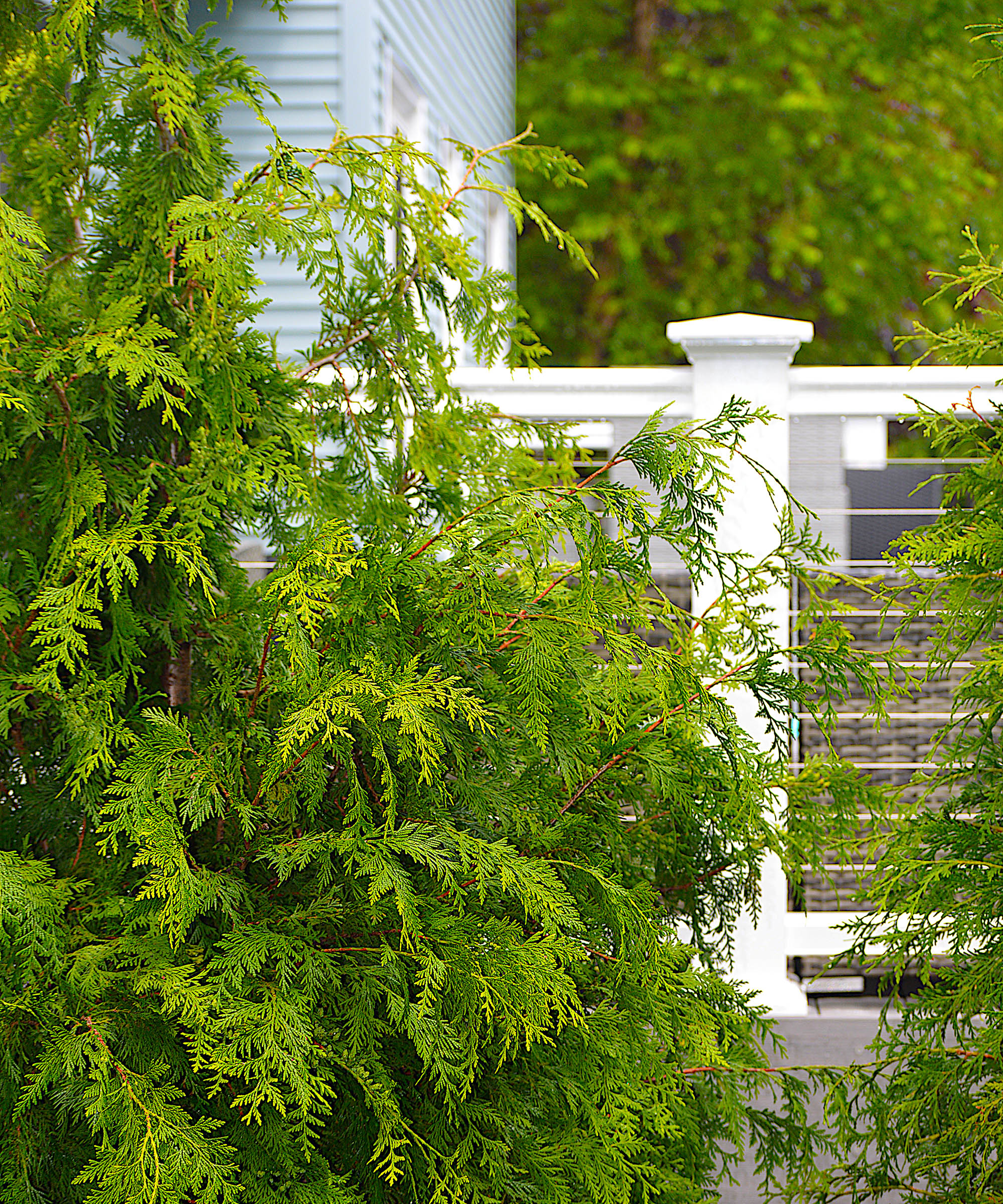
Green Giant Arborvitae tree: key facts
- Plant type: evergreen conifer
- Mature size: height 60ft (18m) x spread 10ft (4m)
- Soil type: broad tolerance, not waterlogged
- Sun level: full sun
- Soil PH: neutral to alkaline
- Growth rate: very fast, 3ft (90cm) per year
- Natural shape: narrow pyramid or columnar
- Foliage: dense, rich green, scale-like in flattened sprays
- Fruiting time of year: summer
- Time of year to plant: spring or fall
- Hardiness zones: USDA 5-8
- Scientific name: Thuja standishii x plicata ‘Green Giant’
- Common name: Green Giant Arborvitae
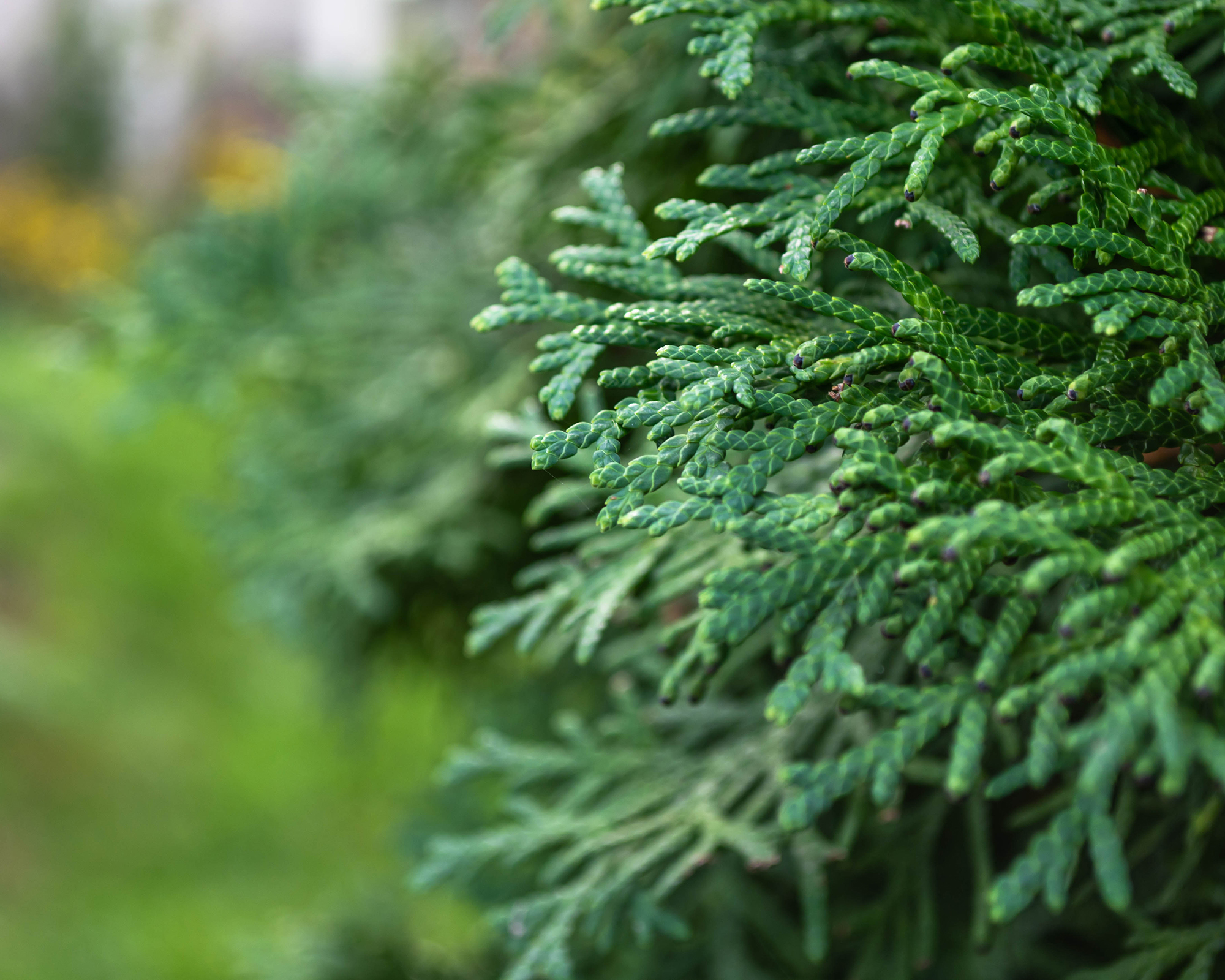
How to use Green Giant Arborvitae trees in your yard
Think about the zones in your yard where you need trees for privacy. You don’t always need a towering hedge for privacy and sometimes you can’t make your entire yard private, nor do you want to block out too much light.
Green giant arborvitae is useful for fast growing hedges – but you don’t have to let it grow to its epic proportions. Instead, you could keep it clipped to an easy-to-maintain height, say around 8ft, and grow specimen deciduous trees throughout your backyard, strategically placed to block the sight-lines from the upstairs windows of neighboring houses.
Be aware that left unpruned, or only occasionally pruned, ‘Green Giant’ will grow very tall and wide (25ft x 10ft in 10 years) and will cast deep shade onto neighboring gardens or any other plants you have growing in your backyard.
If you’re committed to trimming your Green Giant Arborvitae trees at least once a year, then it’s fine to position them as close as 3ft (90cm) from the boundary line. Ideally, they should be planted 10-20ft (3-6m) away from any other trees and shrubs, so these won’t have to compete with the giants for moisture and nutrients.

When, where and how to plant Green Giant Arborvitae
Green Giant Arborvitae will grow well as backyard trees if planted in an area that receives at least six hours of sunshine a day. It will tolerate some shade, but only dappled, not deep shade, and it may not grow as dense or as fast.
When it comes to soil, Green Giant isn’t picky and will tolerate a wide range of soil textures – from heavy clay to light sand, although waterlogged is a no-no. If your soil is poorly drained, swamp cypress (Taxodium distichum) and Atlantic white cedar (Chamaecyparis thyoides) are better choices. Green Giant is also sensitive to salt and shouldn’t be planted near roads that are regularly gritted in winter.
To get your conifer plants off to the best start, plant them in either the spring or fall, when temperatures are warm and with enough rainfall to help them establish well. Dig over a large area to loosen the soil so that the new roots can better seek out moisture and nutrients and go on to become great low-maintenance trees.
Dig a hole as deep as the rootball and tease the roots out before placing it in the hole. Ensure the top of the rootball is level with the soil and backfill with soil tucking it into the gaps before firming in with the heel of your foot. Water in thoroughly. New plants will need regular watering for the first year at least, or when the top couple of inches of the soil is dry.
The American Conifer Society says, 'there’s no need to fertilize your soil before planting conifers as conifers typically have lower nutrient requirement than broad-leaved trees. With increased public concerns over the impacts of excessive fertilizer nutrients on our surface waters, the days of recreational fertilization are over. Fertilizers need to be applied with a purpose.'
If you suspect your soil is poor – perhaps you have very free draining sandy soil or have a garden in a new development property, the best way to boost soil fertility naturally is to dig in well-rotted horse manure to the growing area (not in the planting hole), when planting bare root trees.
Alternatively, spread the compost on top of the soil where it will act like a mulch, with the added benefits of retaining moisture, keeping the root zones cool and suppressing weeds.
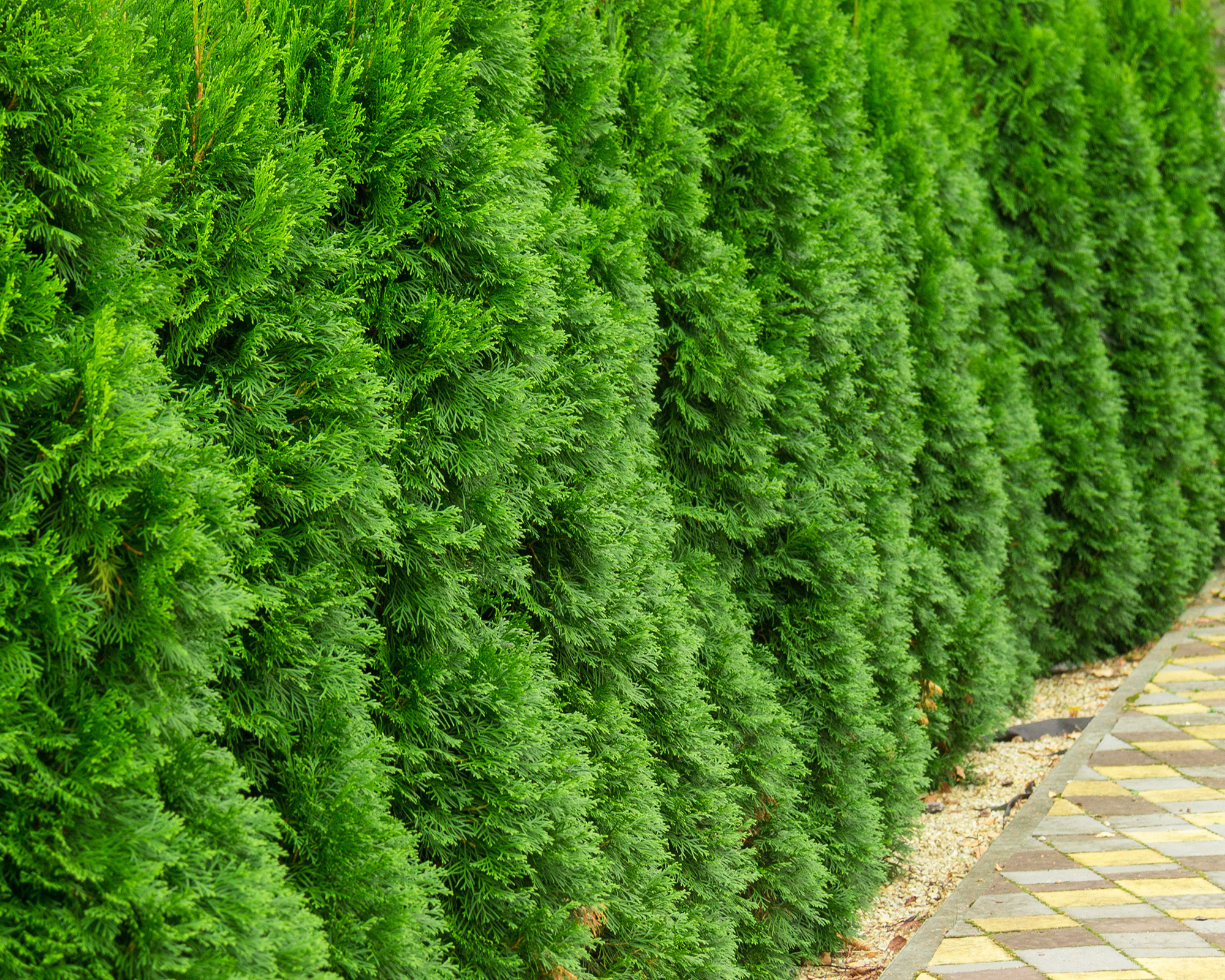
How to make more Green Giant trees
Unlike the best fruit trees which can be grown from their seeds and pips, it’s super easy to make more Green Giant Arborvitae from semi-hardwood cuttings, in late summer.
Because this is a vegetative propagation method using leafy material (rather than from seed as with pawpaw trees) the new plants will be a carbon copy of the parent.
Here's how to do it:
- Find a 6 to 9-inch long twig at the tip of a healthy branch that has soft green growth at the tip. Cut it off making a 45-degree angle cut.
- Strip off the foliage growing along the bottom half of the twig and cut the remaining upper leaves back by half.
- Dust the bottom inch with hormone rooting powder using a small paintbrush or cotton swab.
- Insert the cutting into a pot of moistened nursery sand, pushing it into about half the length of the cutting.
- Move the cutting into a greenhouse or somewhere it will be protected from direct sun and strong wind.
- Regularly mist the cutting to keep it moist using a hand spray bottle. If you can provide bottom heat, this will help to speed up the rooting process.
- Your cutting will be ready to transplant into a pot of compost in about six weeks, gently tug on it every so often to feel whether it has rooted firmly into the sand.
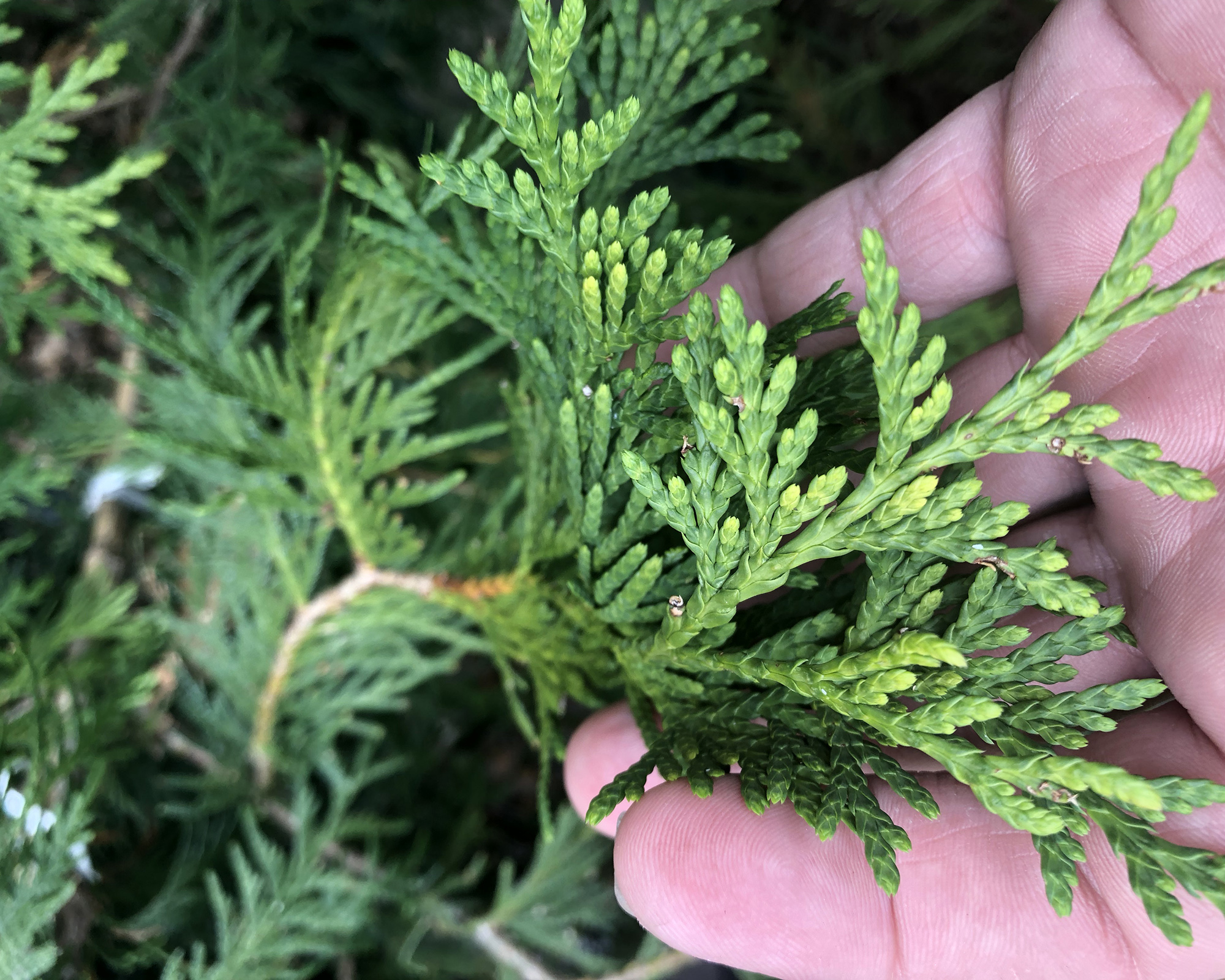
Common problems with Green Giant Arborvitae
According to the American Conifer Society the number one cause of conifer demise is planting them too deeply: 'It’s critical for a conifer’s root flare (the point at which the roots begin to “flare out” from the trunk) to be visible at the soil’s surface'.
The root flare is the point where the woody tissue on the tree’s main stem turns into a different type of organ: roots. If this is buried, it may start to rot.
Green Giant Arborvitae rarely has any pest or disease problems, but it can be susceptible to bagworms. The tale-tell signs are distinctive orange-brown hanging-bag-like structures.
These are not a problem if you catch them early – handpick them off in the fall and use a water hose to spray the harder-to-reach bags higher up the tree. Dispose of them so they cannot reinfect. With a more serious infestation, you may need the help of a professional to spray the pests with insecticide.
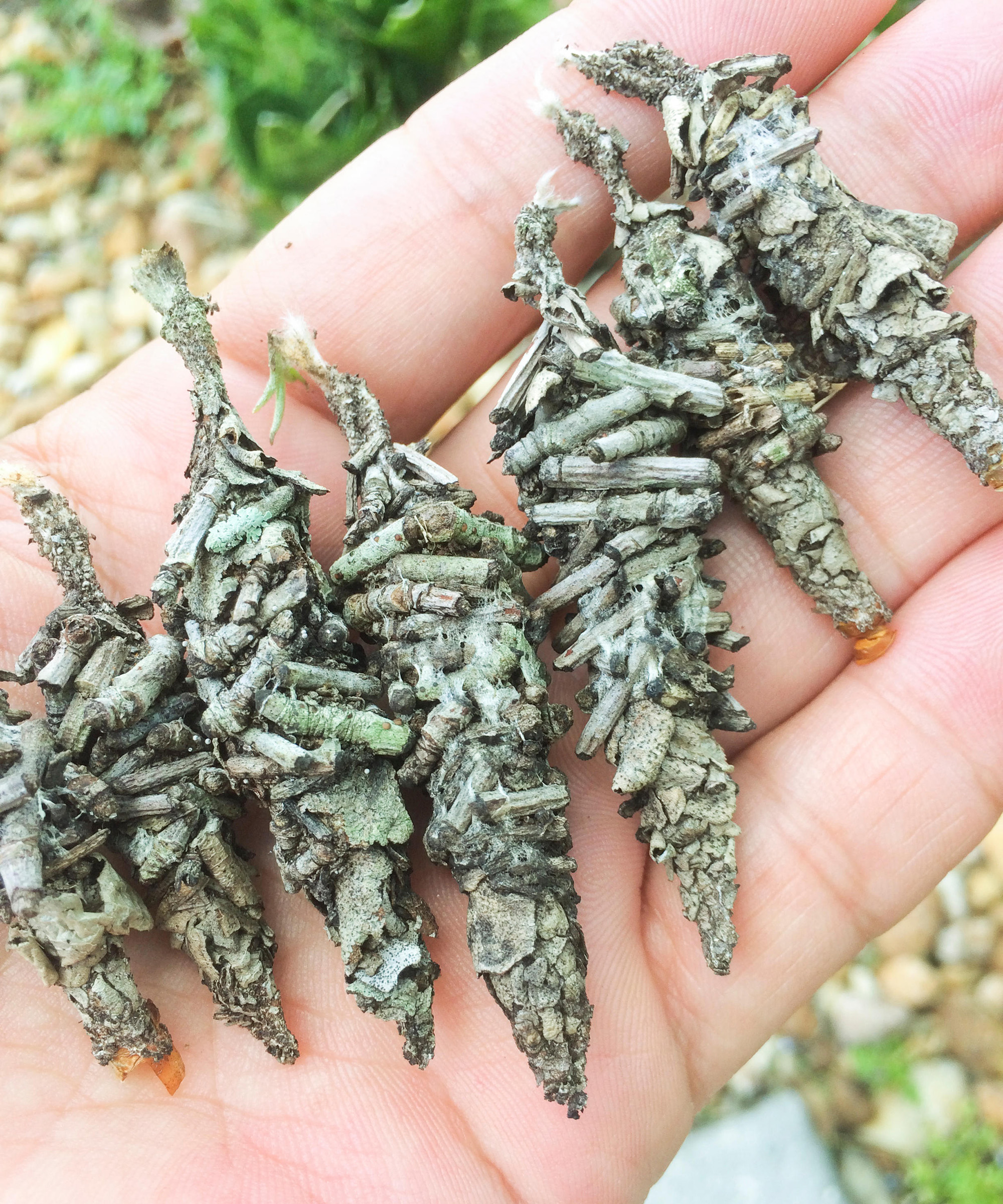
When and how to prune Green Giant Arborvitae
'The most common mistake with conifer hedges is to wait until they reach the desired height before you start trimming, say Thuja Green Giant. 'As soon as your new plants are becoming established – and you can tell that by the appearance of new growth – you should start trimming them very lightly.'
'At first, you just need to go along the line and snip off an inch or two of the longer new shoots. This will encourage your plants to send out more side-shoots and develop a denser pattern of growth. Allow to grow a little, and then trim lightly again. Gradually let it grow to the size you want, and it will already be neat and dense when it gets there.'
'You can trim your Green Giant Arborvitae at most times of year as they are fast growing trees, but the best times are late summer to early fall, or late spring, after the new growth has sprouted out and ripened. If you always want a very neat hedge, then you can also trim in summer, but do it before the hottest part of the year begins.'
Never cut into a branch so hard that it’s just a bare stem. These will never sprout again.
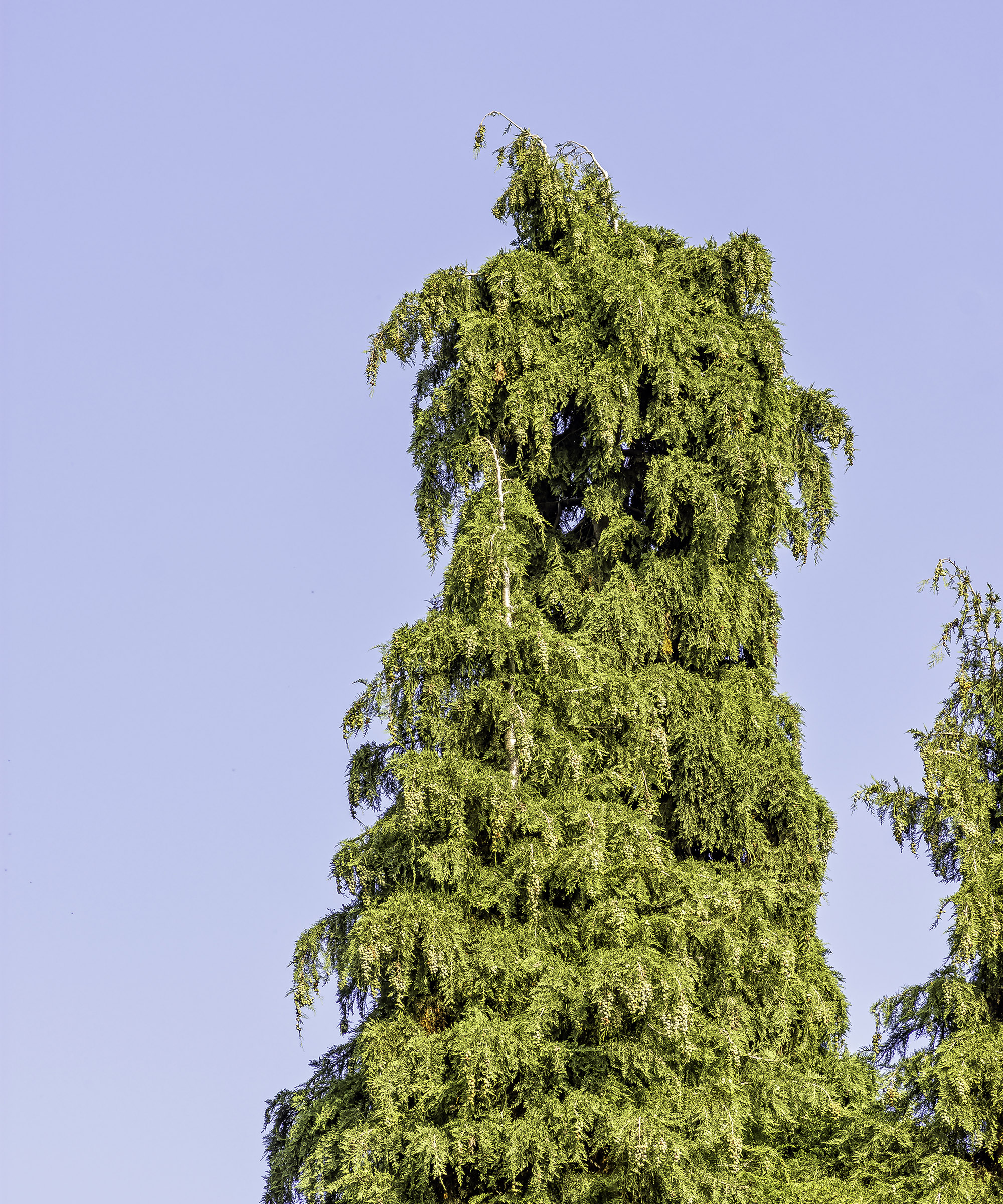
Is Green Giant Arborvitae native to the US?
The Thuja genus belongs to the Cypress family and within that genus there are six species of coniferous, evergreen trees, native to North America and Asia. ‘Green Giant’ is a hybrid between Thuja plicata (known as Western red cedar, although it’s not a true cedar) native to the Pacific northwest of the US and Thuja standishii, found in the cool temperate forests of Japan.
Both are important timber trees in their respective native homes. Thuja standishii x plicata ‘Green Giant’ originates from a nursery in Copenhagen, Denmark; specimens were subsequently sent to the US national arboretum in 1967.
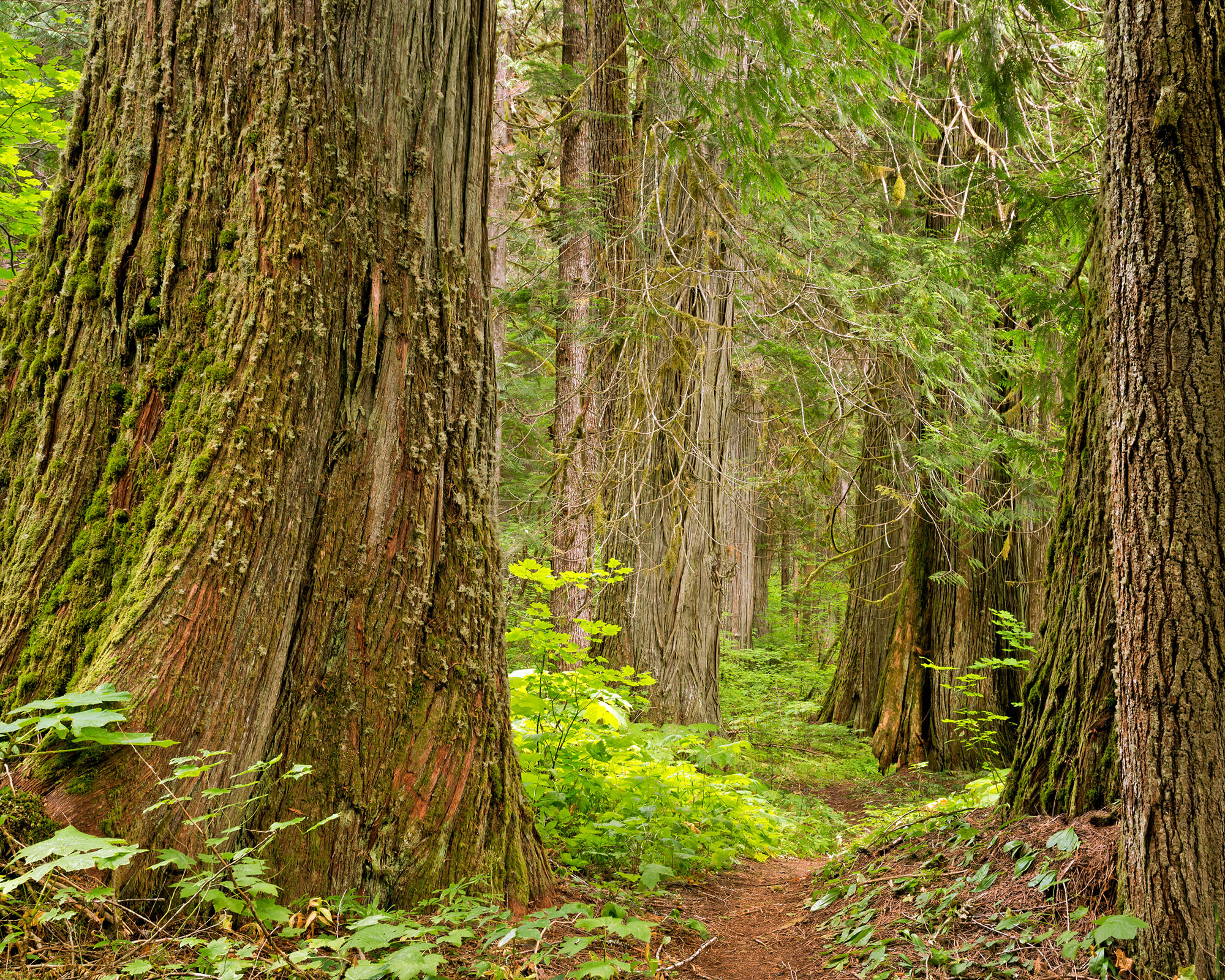
What is the best spacing for Green Giant Arborvitae trees?
According to The Tree Center, the general rule of thumb is 'narrower spacing is better for a shorter hedge, up to 8 feet tall, and use the wider spacing for a taller hedge'. This applies whether you use a single or a double row.
'To create a windbreak or natural barrier, space your plants 5 to 10 feet apart. If you have a large space, you can also plant in a double row, staggering the rows by placing each plant in the space between the plants in the other row. In double rows, set the rows 5 feet apart, with the trees 8 to 12 feet apart.'
'For a neat hedge that’s going to be regularly clipped, plants should be spaced between 3 and 5 feet apart. For an even denser hedge, plant a double row, leaving 3 feet of landscaping around trees and the plants 5 to 8 feet apart in each row. This method takes a few more plants to create a hedge, but the result will be a solid, dense hedge.'

Where to buy Green Giant Arborvitae
Because of its fast-growing habit, Green Giant Arborvitae are readily available online as container plants which can be planted out into you backyard when they arrive.
Shop Green Giant Arborvitae in the US:
- Shop for Green Giant Arborvitae at Nature Hills
- Shop for Green Giant Arborvitae at Fast Growing Trees
- Shop for Green Giant Arborvitae at Planting Tree
- Shop for Green Giant Arborvitae at Lowes
- Shop for Green Giant Arborvitae at Plants By Mail
Shop for Green Giant Arborvitae in the UK:

Working at a garden center when she was 23, Sally realised straight away the therapeutic power of being around greenery and nurturing plants. She's horticulturally trained to degree level and has worked on gardening magazines for over a decade. Sally now gardens in Bournemouth, UK, zone 8a (H5).
